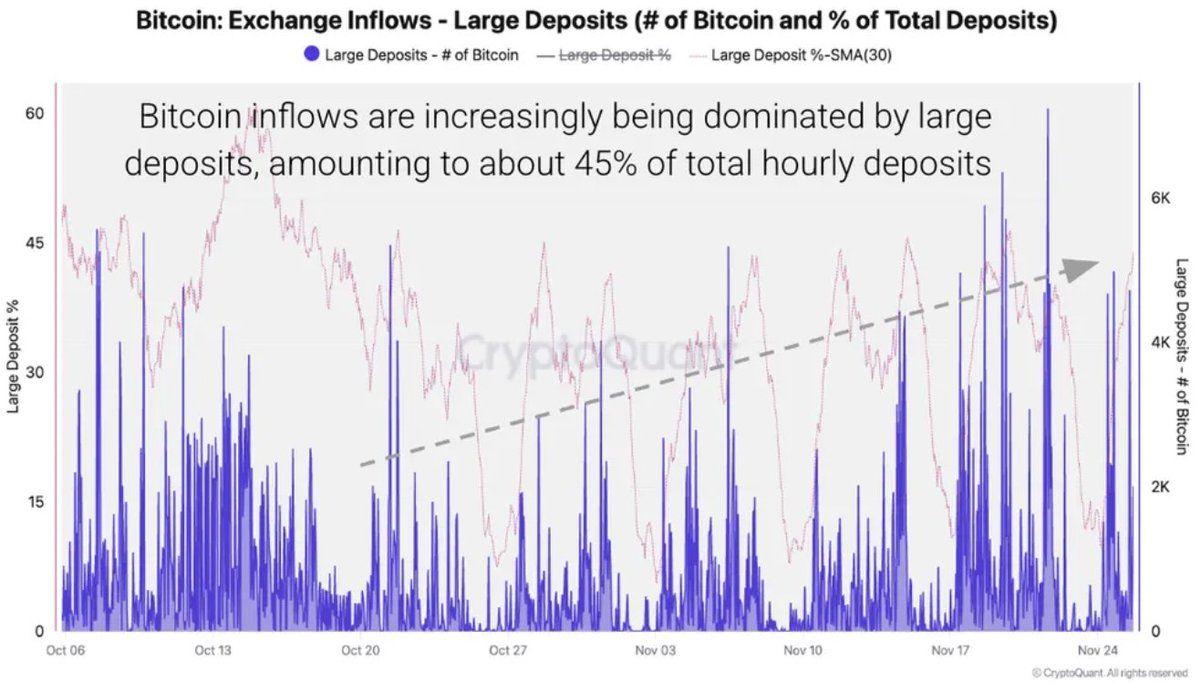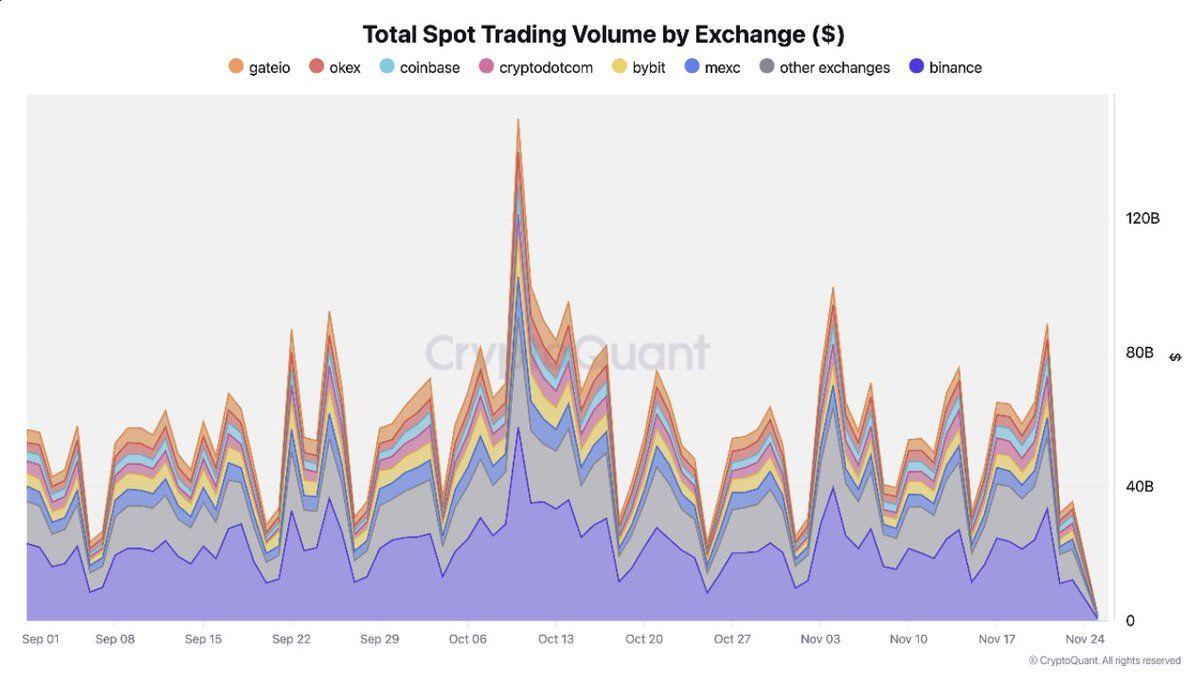Bitcoin has broken above $90,000 and Ethereum is trading above $3,000. However, mixed on-chain data reveals a market divided between selling pressure and large outflows.
Large deposits to exchanges now account for 45% of all Bitcoin inflows, reaching 7,000 BTC on November 21, according to CryptoQuant. At the same time, an unprecedented 1.8 million BTC Bitcoin withdrawal from exchanges overnight has fueled speculation about institutional moves. Binance's stablecoin reserves hit a record $51.1 billion, suggesting traders are preparing for greater market volatility.
Bitcoin and Ethereum market volatility
Bitcoin is trading at $90,418, up 3.12% over the last 24 hours. It peaked at $126,080 on October 6, 2025, but is now down 30% below All-Time-High. Ethereum is showing a similar pattern, trading at $3,023.74 with a daily gain of 1.74% after hitting $4,946.05 in August 2025.
The price recovery comes after a correction that saw Bitcoin temporarily drop to $80,000 last week, triggering a strong market reaction. Volume reveal this volatility: Bitcoin's 24-hour volume reached $69.56 billion and Ethereum's $21.27 billion.
However, prices don’t tell the whole story. on-chain data highlights a complex environment. Different types of investors are making conflicting moves, as shown by the divergence between price direction and exchange inflows and outflows .
Concerns about cash flow into the floor
Exchange inflow statistics raise concerns for Bitcoin advocates. CryptoQuant data reveals that large deposits into Bitcoin exchanges have been rising steadily since November 24, approaching levels seen in late October. The 30-day moving Medium of large deposits points to continued selling pressure.
Deposits of 100 BTC or more now account for 45% of inflows to the exchange, suggesting whales are preparing for major portfolio changes or liquidations.
 Large Bitcoin deposits surge to 7,000 BTC as price drops to $87,000. Source: CryptoQuant
Large Bitcoin deposits surge to 7,000 BTC as price drops to $87,000. Source: CryptoQuantThis activity is consistent with Bitcoin's recent price decline. Previous patterns suggest that large deposits can lead to further price declines as large investors reduce positions or switch strategies.
BTC and ETH inflows this week totaled $40 billion, with Binance and Coinbase leading the way. Increased deposits often indicate upcoming liquidation events or active trading strategies.
Analysts at CryptoQuant caution that these trends may reflect technical changes, such as the addition of new exchange wallets to the tracking system. However, the overall uptrend indicates that real market forces are at work, not just technical noise.
Notable withdrawal moves
In contrast to the increased inflows, a significant amount of withdrawals stunned observers. An estimated 1.8 million BTC—about $162 billion at current prices—left exchanges in a single session overnight.
This massive outflow has led to intense speculation about institutional accumulation or strategic portfolio moves. Exchange reserves are now around 1.83 million BTC, down sharply from previous levels. History shows that falling reserves often accompany positive moves and indicate that coins are being moved into long-term storage .
The size of the withdrawal far exceeds typical daily movements, signaling possible coordination among large investors. However, experts urge caution—part of the move could be due to technical changes, treasury operations, or shifts in institutional custody services.
Binance's stablecoin accumulation
Adding to the uncertainty, Binance's stablecoin reserves now stand at an All-Time-High of $51.1 billion. Traders appear to be preparing for buying opportunities or hedging against larger price swings as stablecoins accumulate on the exchange.
 Spot volume spikes during correction with Binance leading the way. Source: CryptoQuant
Spot volume spikes during correction with Binance leading the way. Source: CryptoQuantThis stablecoin accumulation comes amid a market correction and sharp fluctuations in volume. Spot volume peaked at nearly $120 billion before stabilizing. Binance and Coinbase continue to dominate both spot and Derivative trading.
Ethereum moved in tandem with Bitcoin during this period. Like Bitcoin , it faced increased deposits and active trading, demonstrating both selling and continued market participation.







